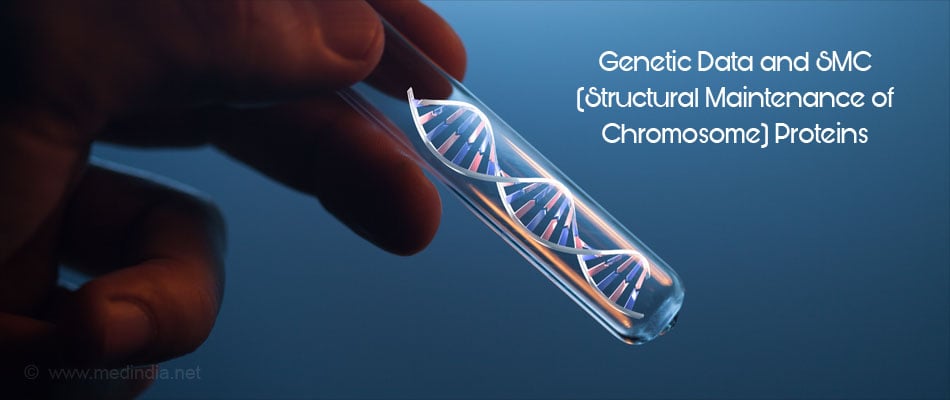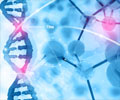
- Two proteins have been found to mediate chromosome organization.
- This could aid in the identification of the origins of cancer.
- The changes in the chromosome are mediated in part by promoting the interaction with certain sites on the chromosomes while inhibiting certain other sites.
- The SMC proteins use energy from ATP to make the changes to the chromosome.
During the process of transcription and repair of DNA, there are interactions with distant parts of the DNA that occur. The DNA is organized into loops during this stage and these structures are stabilized by these proteins.
These proteins mark boundaries in the one dimensional DNA strand while these domains are arranged in the nucleus in a 3 dimensional space. Apart from this, the proteins also prevent association between homologous regions.
Role of SMC in Expression of Genes
Studies on Caenorhabditis elegans have shown that SMC play an important role in gene expression. C. elegans has a protein that is similar to condensin but differs in one single subunit, SMC-4 is changed to DPY 27. The protein is called Dosage Compensation Complex (DCC). The binding of DCC to specific sites on the promoter correlates with the expression levels of the gene.
Role of SMC in Metazoan Development
- Differentiation
- Neuronal development
- Cell fate patterning
Role of SMC in Loading and Distribution
Sites that are enriched with cohesin occur every 15Kb, with the distribution of the cohesin rich sites being dynamic on the chromosome. The cohesin rich sites are influenced by DNA repair and translation.
Condensin is an important factor in DNA loading with the existence of two condensin complexes. SMC, both condensin and cohesin have interchangeable molecular parts that can be reshuffled. These create independent complexes that have their distinct function. When even one cohesin subunit is changed, it leads to a dramatic change in function of the complex.
The SMC complex with its interchangeable subunits may be specified after post-translational modifications. Studies so far have not been able to clearly define the functions of SMC but it has been found that disruption of the subunit can lead to mitotic defects as well as lethality.
Greater Insights into the Function of SMC
A new study by Ken-ichi Noma and colleagues has provided greater insight into how these two proteins play an important role in organization of chromosomes in our genome.Ken-ichi Noma who is the lead author of the study and is an associate professor at The Wistar Institute in the department of gene expression and regulation program says “Understanding the three-dimensional structure of our genome is critical if we are to properly understand key functions like transcription, DNA replication and repair.”
Study on Fission Yeast
Fission yeast undergoes cell division that is similar to humans and so was used to study the exact roles of cohesin and condensin in the organization of DNA. The studies showed that the two SMC proteins bind to the same regions of the DNA but the domain vary in function and size depending on the protein that binds to them.
Result of the Study
- The association between closely placed chromatin are mediated by cohesin.
- Larger associations are mediated condensin.
Mutation Study
The researchers induced a mutation in ace2Δ gene which codes for transcription factors that are associated with condensation. This led to disruption of the domains that the genes were associated with and further led to defects in chromosome segregation.
The authors suggest that the transcription factors play an important role in binding the condensin to the chromosomes which then regulate cell division or mitosis. Only when this process takes place does chromosome segregation occur.
Noma adds “The more we know about the role of condensin and cohesin, the more we can learn about key processes involved in the cell cycle and how cancer can be controlled through processes like cellular senescence.”
The understanding of the roles and function of condensin and cohesin in chromosome organization aid in better understanding of the mechanism involved. This will aid in analyzing genetic disorders including cancer.
References:
- Condensin and cohesin complexity: the expanding repertoire of functions - (https://mcb.berkeley.edu/labs/meyer/publicationpdfs/WoodSeverson.pdf)











